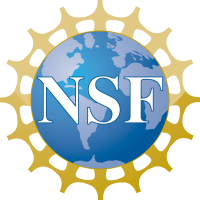You are here
Rhode Island's Track 2 Ideas
Rhode Island's Track 2 Ideas
Updated Aug 31, 2011 at 11:21 AM by Kate WIlson
Mark this as a favorite
Rhode Island's Track 2 Ideas
Rhode Island Track-2 Ideas
In Rhode Island, the leveraging of multiple grants has led to 339 miles of new fiber providing High Speed Broadband access to all K-12 schools, higher education institutions, hospitals, and government agencies called “community anchor institutions.” In just a little over a year, that fiber will all be live. As a state, we are now trying to answer the question of what to do with all this fiber.
The Rhode Island Economic Development Corporation (RI EDC) started an initiative called Broadband Rhode Island (BBRI) to help answer this question of Broadband adoption. The kickoff event brought together over 80 stakeholders from differing interest groups: educators, government officials, small business owners, IT professionals, researchers, and more. A working group was formed to develop those ideas into policies that could possibly be taken the lawmakers.
Simultaneously while those efforts were occurring, individual communities brainstormed ways to adopt the high-speed access and Rhode Island EPSCoR has been center in those discussions. Some of those ideas could be possible projects incorporated into the next Track2 for the NECC as well.
- Computational Science is a growing need in order to analyze the high capacity data. (see Bethany Jenkins Attached White Paper:
2010 Genome Biology URI research needs v3.pdf
At the University of Rhode Island, a focus group has been formed to bring together the Computer Science and Life Science faculty and IT administrators to see to this growing need of hiring new faculty and possibly developing a certificate program. Creating new education programs the combine computer science and life sciences is needed to sustain the growing field. However, that can take years to establish. Rhode Island NSF EPSCoR already has an established Summer Undergraduate Research Fellowship that sponsors 25 students each summer at the 9 partner institutions. (see http://www.risurf.org/) for more details. SURF could be expanded to the NECC states to bring Computer Science majors together with Science Faculty (or science majors to CS faculty) across institutions in the summer to inspire collaboration and get the students interested in computational science who otherwise would not have the research opportunity.
- Peter August, GIS expert from University of Rhode Island says:
“If digital literacy includes a sense of place (ala Google and Bing maps), then the ever-improving cyber infrastructure in RI is making the URI EDC and RIGIS mapping services more and more accessible to our citizens. In the old days (6-12 months ago) if you wanted to tap the 100’s of geospatial datasets we have for RI, you had to download them from the RIGIS site and use special software to view them. Now (in the last year), Greg Bonynge and Chuck LaBash (URI EDC) have put about 50 (and growing all the time) datasets on a publicly available web-based mapper that anyone can use. For an example along your climate change (Galilee SLR scenarios), see the attached or below: http://bit.ly/rbKSTz When you use the ArcGIS.com tool, software from California web servers and data (multiple terabytes) from the URI EDC get streamed to your desktop. As you cyber-wonks say -- it’s all about the bandwidth baby!”
-Joan Peckam, Department Chair of the URI’s Computer Science program has recently returned from an exchange program as program director in the Computer and Information Science and Engineering Directorate at the National Science Foundation. She had this to say about the emerging cyber enabled atmosphere:
“We should be highly interested in the training of researchers AND the broader educational aspects. Is anyone working with citizen scientists (the topics that you mention see perfect for such involvement)? Are there gen ed aspects that we should be tapping? We live in a world of open government and open science and one in which everyone should be interested in our environment. Shouldn't everyone be trained to use these tools?
So, for example, the spatial tools that Peter August talks about should be of high and broad interest. People are increasingly interested in biomedical issues that affect their families ... and perhaps the hurricanes that might come our way, or the state of the waters that they drink and the infrastructure in which they travel .... .
Do we have portals available that could provide a basis for education of all scientists in all settings (formal, informal, research, educational institutions, including public schools)? BTW, the scientists are finding that the "citizen scientists" are quite capable of contributing to the science in some cases - many eyes and multiple perspectives strengthening the science. Could this provide a basis for robust broader impacts along with the research support?
Something of interest to our department and to researchers at Roger
Williams and Brown - cybersecurity and cyber forensics. Is there any effort to make these resources safe and secure? If efforts in machine learning (how to make sense of large data sets) or 3-D graphics are needed, we also have experts in these areas.
Computational Science or Computational X, where X= any discipline seems big today - as is the development of interdisciplinary expertise.”
- Rhode Island PBS just launched their “Digital Learning Library,” a portal for educators to link into the national PBS learning media which includes over 15,000 videos, interactive applications, and other curriculum tools. Now they are looking for collaborative partners to take the program to the next level. This could include content creation, sponsoring educational studies, and distributing the content to educational centers. Rhode Island NSF EPSCoR has established a partnership and is in the beginning planning stages. (See Kate Wilson's White Paper:
PBS and Rhode Island NSF EPSCoR
Other local PBS stations are taking the same on the same outreach initiatives and NECC could be another collaborating partner.
- Rhode Island NSF has also recently partnered with Broadband Rhode Island to help develop a Digital Literacy Program. See this article about the program: (http://www.pbn.com/detail.html?sub_id=b9ea64e9cb42)
-Jennifer Specker: Latitudinal adaptations of aquatic life from Delaware to Maine
Estuarine waters warmed over the last century. As a consequence and as an example, in Narragansett Bay the community structure changed. One vertebrate that serves as a model for studying many aspects of biology is the killifish or mummichog, Fundulus heteroclitus. Dennis Powers led investigations into the molecular ecology of the killifish and published seminal papers in the 1980’s on genetic basis of evolutionary change and specifically on LDH allozymes and on hemoglobin. Marta Gomez-Chiarri, Professor at the University of Rhode Island, co-authored papers with Dennis Powers. Dr. Diane Nacci, at the US EPA Atlantic Ecology Division, along with Jennifer Specker, Professor at the University of Rhode Island, and others have published papers on the adaptation of killifish in New Bedford Harbor, a Super Fund Site that is contaminated with PCBs. These papers examine cytochrome P450 enzymes. Ben King, at MDIBL, is working with funding from NSF NECC to study the killifish. These few examples only begin to tap into the rich literature that provide the foundation for observing changes along the coast as climate variability increases.
Likely the best model invertebrate for parallel studies is the water flea, a small crustacean, Daphnia spp. A number of well-known scientists at MDIBL are funded to use Daphnia as a model organism for studying population genetics and responses to ecotoxicology, spearheading a field called environmental genomics. In the five states that constitute the NECC, there is laboratory and field strength prepared to observe consequences of increased climate variability on populations of coastal aquatic organisms, with Fundulus and Daphnia as excellent candidates to represent vertebrate and invertebrate animals. As we begin to work on the proposal, there is needed input on algae and/or eelgrass that could be also used as a model systems. An obvious question that requires teamwork is the spatial and temporal abundance of a variety of organisms along the latitudinal gradient as climate variability increases.


